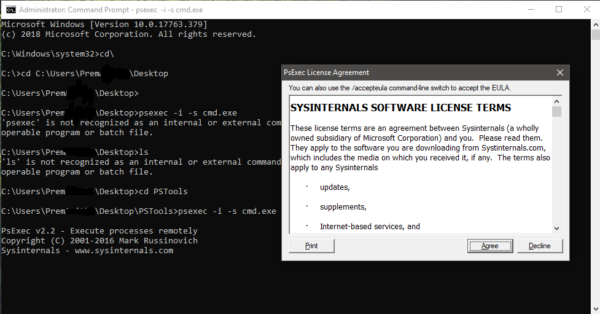

- #WINDOWS FIND FILE COMMAND LINE HOW TO#
- #WINDOWS FIND FILE COMMAND LINE WINDOWS 10#
- #WINDOWS FIND FILE COMMAND LINE WINDOWS#
The first iteration of the CD command you should know is CD\.
#WINDOWS FIND FILE COMMAND LINE HOW TO#
How to go to the root of the drive, in CMD (CD\) This command enables you to change the current directory or, in other words, to navigate to another folder from your PC. The first command from the list is CD (Change Directory). How to change the directory in CMD (CD in Command Prompt)
#WINDOWS FIND FILE COMMAND LINE WINDOWS#
NOTE: The information shared in this tutorial applies to Windows 11, Windows 10, and even older Microsoft operating systems such as Windows 7.
#WINDOWS FIND FILE COMMAND LINE WINDOWS 10#
Do you use Command Prompt in Windows 10 or Windows 11?.If you want to narrow the search down by file type, enter the file extension after the period. This will tell you what process (es) have the file (or folder) locked. And the file path is C:\path\path\file.txt', run this: handle 'C:\path\path\file.txt'. It is used to search for a specific text string in a file or. Unless you've added Handle.exe to the PATH environment variable. find (Windows) computing, find is a command command-line interpreters (shells) operating systems. s The above command will look for all files that match the file name you entered regardless of the file type. If you want to find what program has a handle on a certain file, run this from the directory that Handle.exe is extracted to. How to get help in the Command Prompt (HELP in CMD) Displaying the file type (file command) To display the type of information the file named myfile contains, type the following: file myfile To display the type. To search for files by name, use the following command Syntax dir filename. How to launch an app from CMD (Command Prompt) There are several methods to open the Command Prompt window on your Windows computer. How to delete a folder from CMD (RD in Command Prompt) To find the File & Folder Ownership information using Command Prompt, follow these steps. How to delete files with Command Prompt (DEL in CMD) How to copy folders in CMD, including their contents (XCOPY in CMD) How to copy files in CMD (COPY in Command Prompt) How to rename files and folders with Command Prompt (REN in CMD) The above example uses wildcards (the asterisks ). Swipe in from the right edge of the screen, and then tap Search.Or, if you are using a mouse, point to the lower-right corner of the screen, and then click Search.Type Command Prompt in the Search box, right-click Command Prompt, and then click Run as administrator. If, for example, you knew that the file had bob somewhere in the file, you would type: dir bob.
/windows-7-cmd-commands-5814df755f9b581c0baede29.png)
How to create a new directory with Command Prompt (MD in CMD) Once at the root directory or the directory you believe the file to be in, type any of the following commands. How to view the contents of a directory in Command Prompt (DIR in CMD) How to change the drive in CMD (Command Prompt) How to change directory in CMD to desktop (or other user folders).How to change the parent directory in CMD (CD.) You can type that in the box or click the Browse button and navigate to the file Cmd.exe that is in C:WinntSystem32.It will (1) show you the file path, and (2) give you the file name and extension. Command Prompt will now search and find all instances of the search term you entered. So, if we wanted to locate our file called Example File, we’d use this command: dir '\example file' /s. How to navigate to a specific folder in CMD (CD path) Just replace search term with, of course, the actual search term.How to go to the root of the drive, in CMD (CD\).You can also create your own CMD scripts with a text editor by adding one or more commands on separate lines and saving the file as a CMD file. Since CMD files store commands in plain text format, they can be opened and edited with a text editor, such as Notepad or Wordpad. To run a CMD file in Command Prompt you must first navigate to the location of the CMD file, then press "Enter." For example: You cannot run CMD files in COMMAND.COM, like you may do with BAT files, so that you do not incorrectly execute commands in the wrong Windows environment.

You can run the commands stored in a CMD file in Windows by double-clicking the file or executing it in the Command Prompt ( CMD.EXE) utility. The scripts are often created to perform repetitive tasks that require multiple steps, such as opening and converting a file in a program, creating a backup of a file, or setting the computer to sleep at a certain time.

CMD files were introduced in the early 1990s with the release of Windows NT and can still be run by later Windows operating systems.


 0 kommentar(er)
0 kommentar(er)
